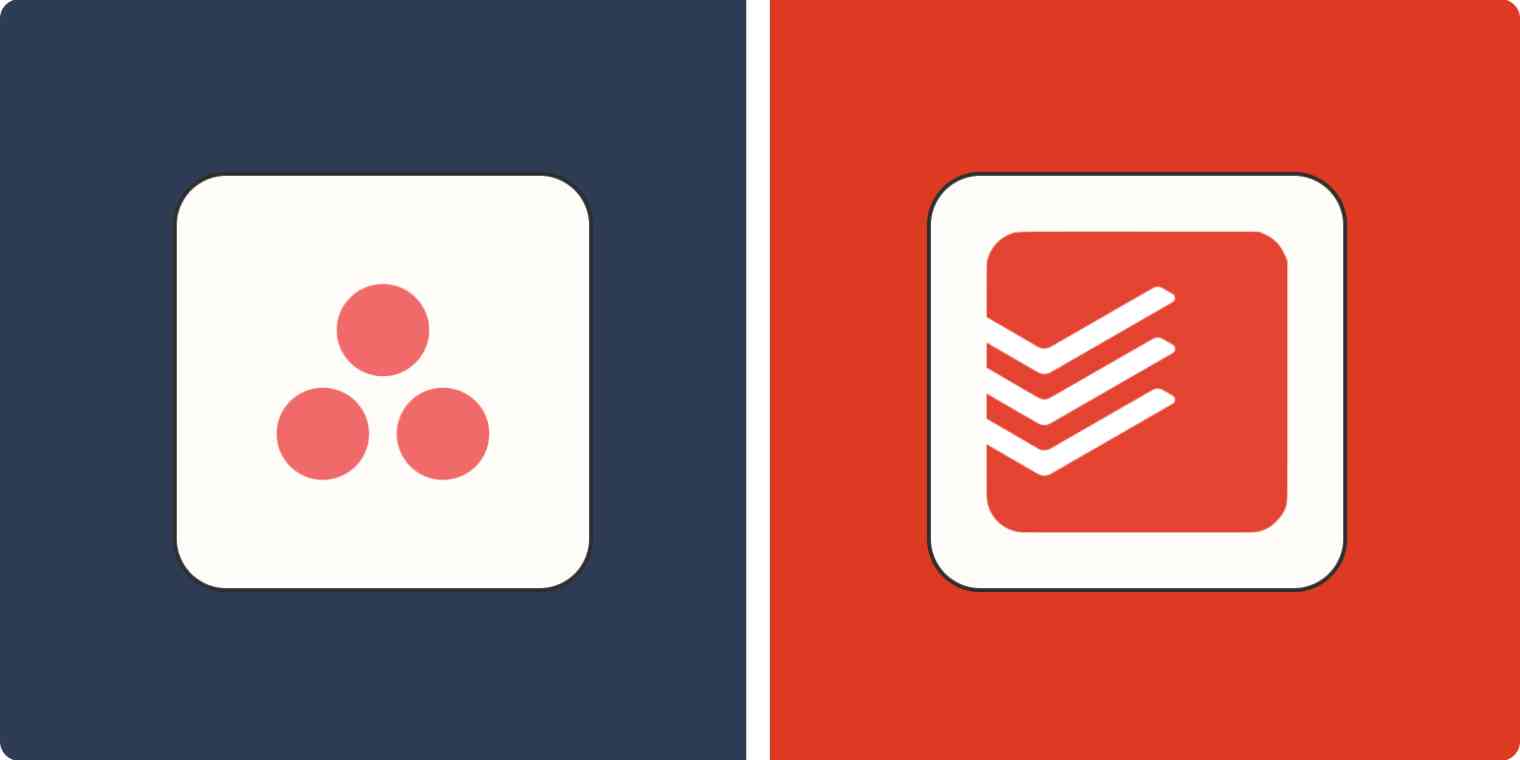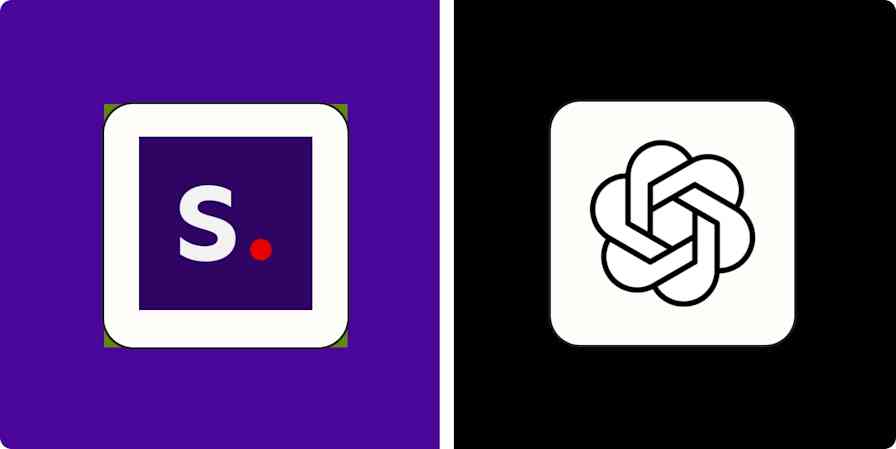Todoist and Asana are two giants of the productivity world, and they're both really good at what they do. But what they do is different: Todoist is all about streamlined to-do lists, while Asana is built for project management.
I use both apps personally, and I spent more time comparing their features to bring you this comparison. As you dive in, think about what you really want in a task management app. It's all up to you and the complexities (or simplicities) you're looking for.
Asana vs. Todoist at a glance
Before I dive into the details, here's an overview of the differences between Todoist and Asana. Short on time? Skip to the end for a quick summary of which app to choose for what situation.
| Todoist | Asana |
|---|---|---|
Software category | To-do list / Task management | Task / project management |
Pricing | ⭐⭐⭐⭐⭐ Todoist offers the most bang for your buck at an accessible price point | ⭐⭐⭐⭐ Asana is more expensive per user but offers many more features |
Collaboration | ⭐⭐⭐ Shared projects, comments, and assigned tasks, but not a lot of big-picture collaboration | ⭐⭐⭐⭐⭐ Co-create and co-project manage with comments, activity, and assigned tasks |
AI | ⭐⭐⭐⭐ Built-in NLP and AI assistant | ⭐⭐⭐⭐⭐ Asana Intelligence generates smart fields, subtasks, summaries, and more |
Automation | ⭐⭐⭐ Automation through integrations | ⭐⭐⭐⭐⭐ Built-in automated workflows |
Integrations | ⭐⭐⭐⭐⭐ Native two-way sync with Google Calendar; integrations with 60+ apps; integrates with Zapier | ⭐⭐⭐⭐⭐ Integrates with 200+ apps and Zapier |
Resource management | ⭐ Non-existent | ⭐⭐⭐⭐⭐ Has capacity planning, workload management, and time tracking tools |
Todoist is better at personal task management, while Asana excels at team project management
These two tools target different audiences. Todoist is a beacon of productivity for individuals, while Asana is a powerhouse for teams—especially bigger teams.
My Todoist personally serves as the hub of all my to-dos, giving me a play-by-play of what I need to accomplish that day.
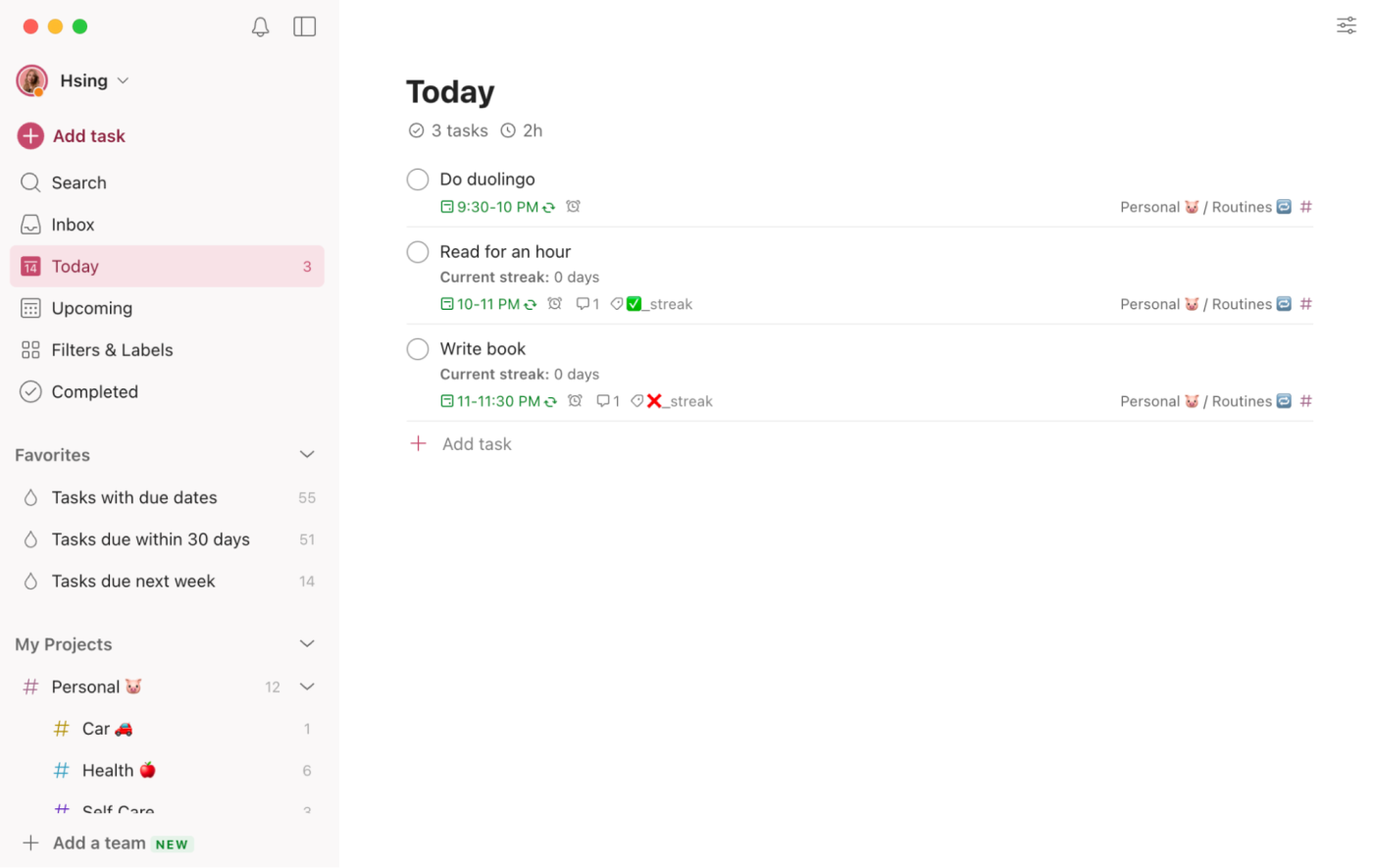
Part of Todoist's appeal to individual users lies in its gamification elements. As a Todoist power user, I find it incredibly satisfying to tick off my tasks and watch my productivity score soar. I'm motivated to keep my streak going and to clear my to-dos for the day, every day.

When it comes to working with teams, though, Asana is worlds ahead. While Todoist lets you assign tasks and comment on them—and offers Team Workspaces, to keep your work and personal to-dos separate—Asana takes teamwork further.
Features like built-in messaging, task dependencies, and comprehensive dashboards and reporting provide a bird's-eye view of team productivity and project progress. It's crucial for managing complex projects involving multiple stakeholders.

Asana's catering to teams is further exemplified by its Workload view, time tracking, and capacity planning tools. These features make it easier to track the time your team members spend on individual projects, so you can allocate resources effectively. But it's worth noting that these premium features are reserved for its highest pricing tier (at $24.99/user/month).
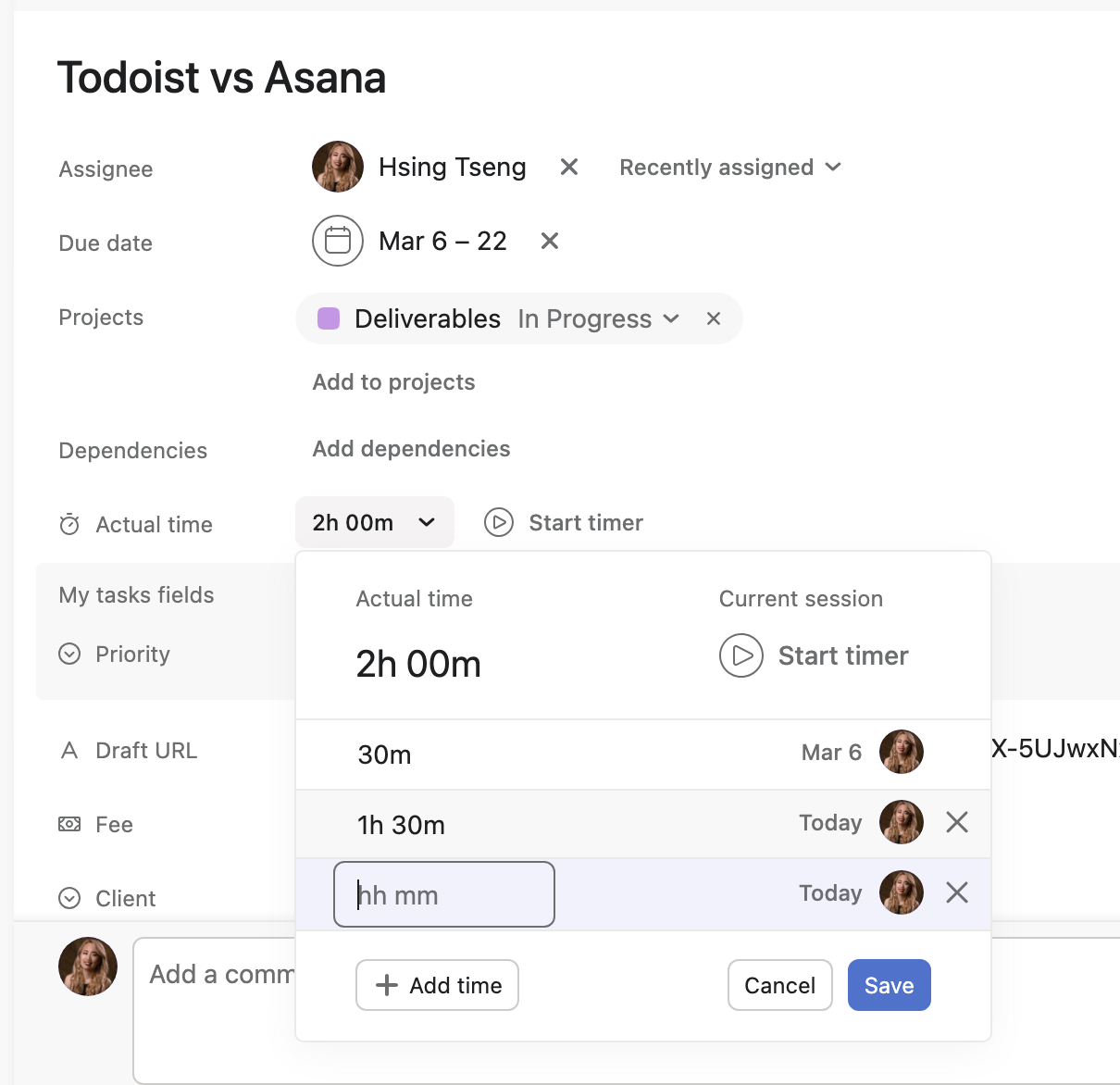
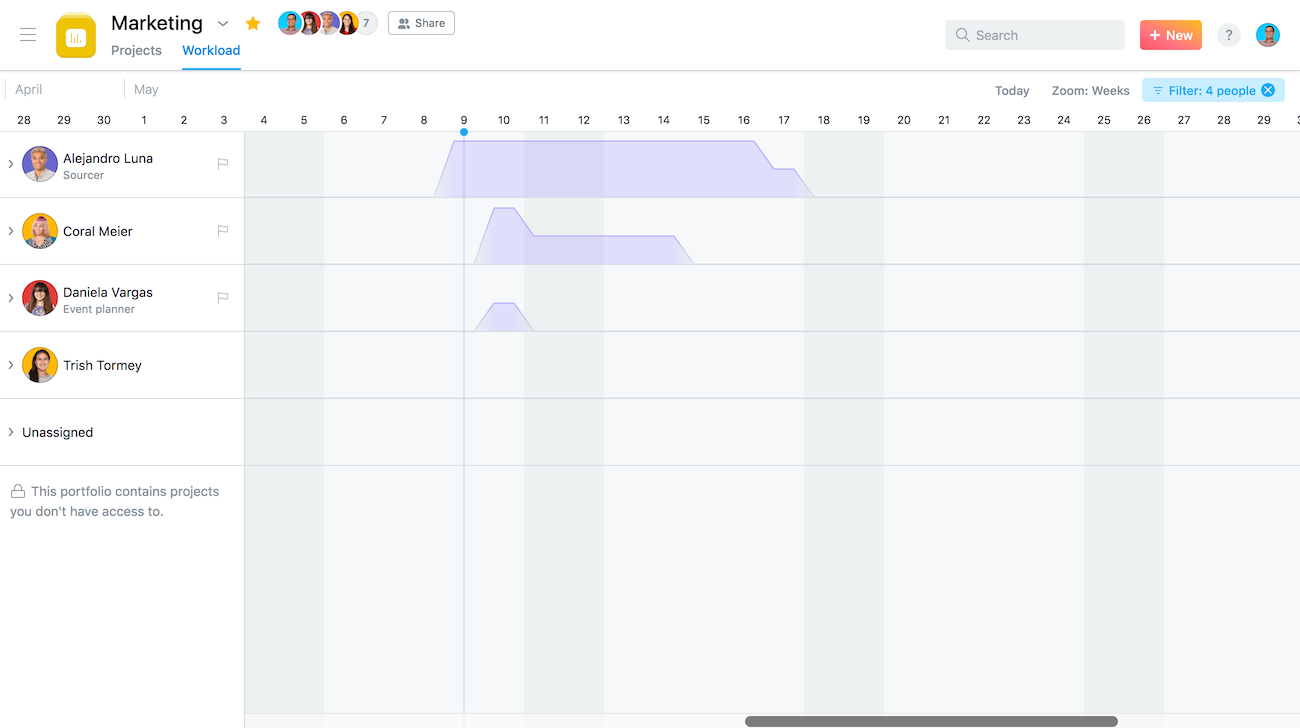
Additionally, Asana offers Gantt and timeline views, which are essential for visual project planning and tracking—a feature that Todoist notably lacks.
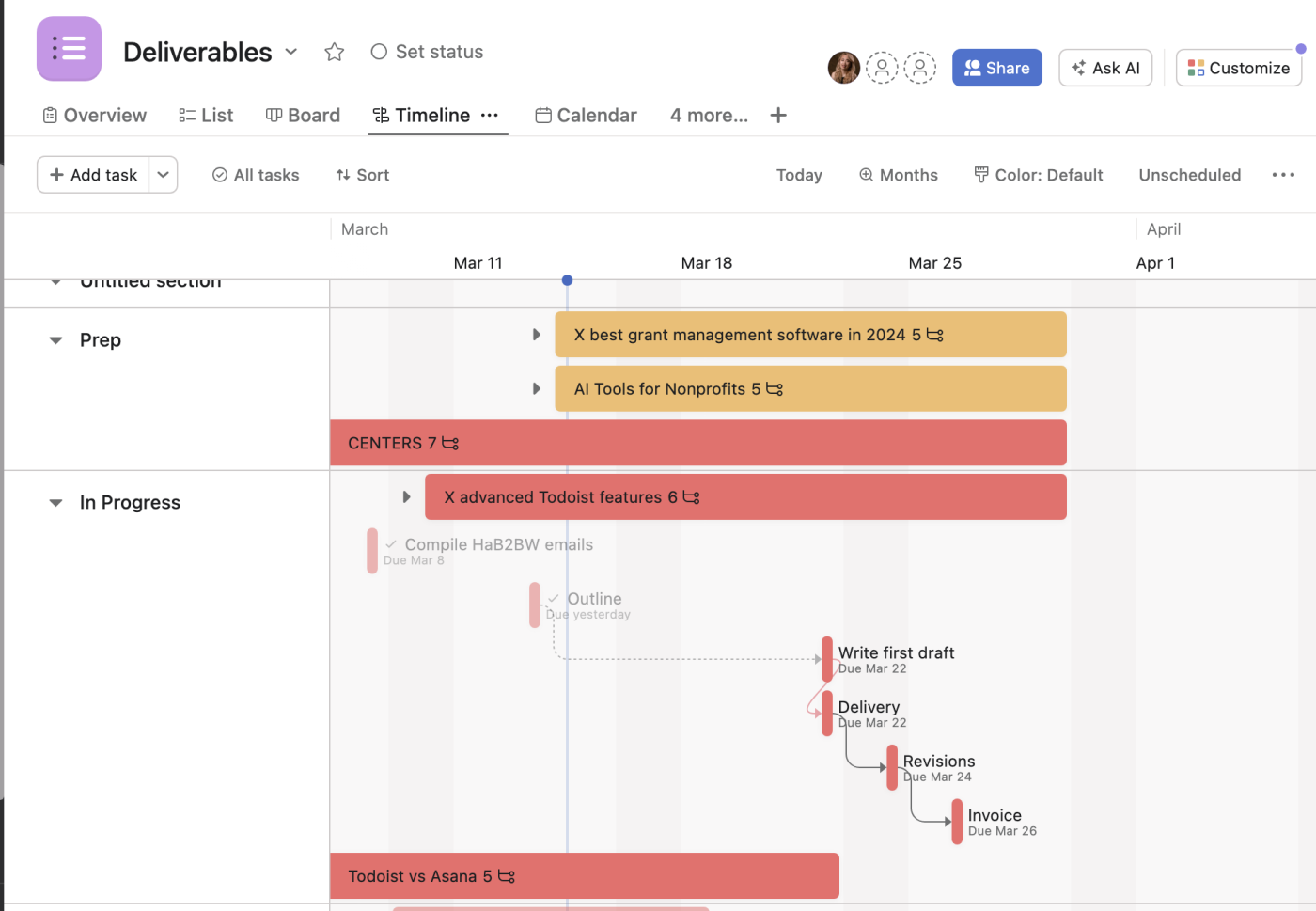
Customization is another area where Asana outshines Todoist and makes it more suitable for teams. With custom fields, forms, and adjustable calendar views, Asana gives teams the flexibility to tailor the platform to their specific needs and workflows.
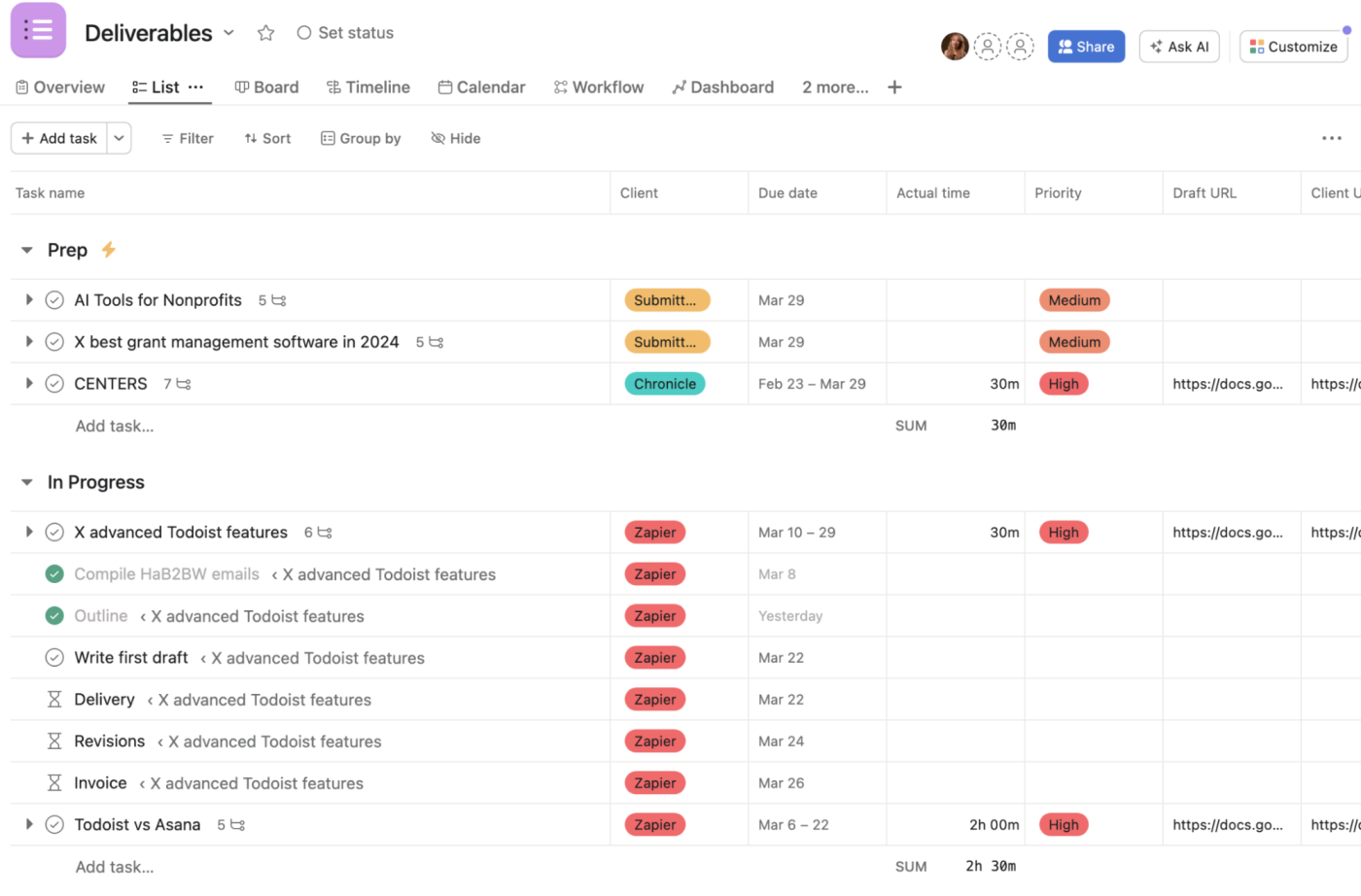
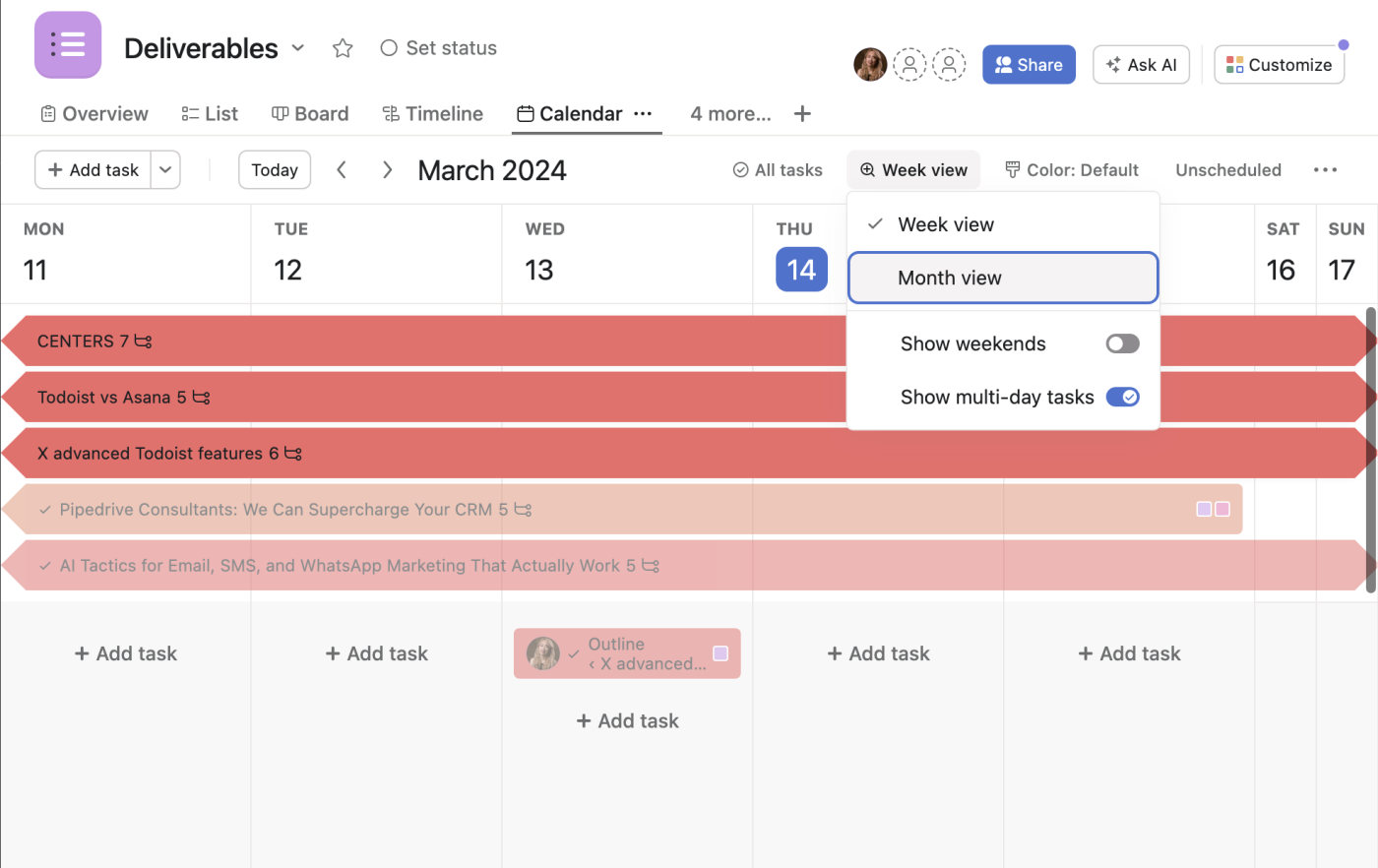
Meanwhile, Todoist only offers one Calendar view (monthly), and doesn't allow for custom fields.
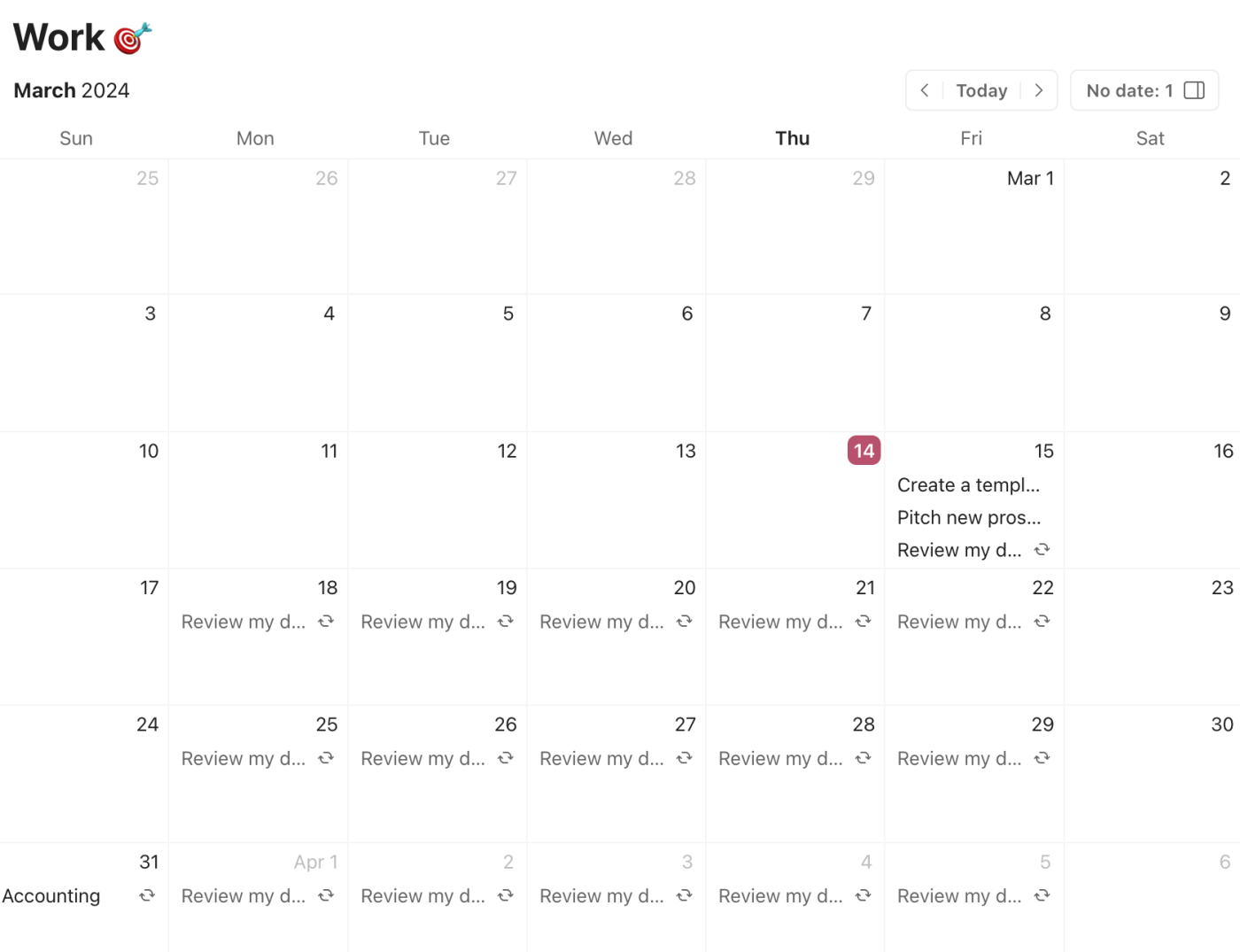
Todoist is cheaper, but Asana has a stronger free version
Nothing beats free, and both Todoist and Asana have free versions. But Asana's free version pulls ahead, allowing for unlimited projects and tasks versus Todoist's three projects. Todoist's free version also lacks reminders, a key feature that makes Todoist so great.
But let's cut to the chase: cost matters. And Todoist is extremely affordable, at $4/user/month. Compare this to $10.99/user/month for Asana's cheapest plan—that's nearly three times the cost. This makes Todoist an attractive choice for individuals and teams looking for an efficient, cost-effective way to manage tasks without breaking the bank.
If you're looking for a $0 solution, Asana might be stronger, but you run the risk of coming up against paywalls once you exhaust its freebie functionality. If you're looking for a cheaper, value-packed task management solution, Todoist is an extremely viable option.
Asana has more robust AI features
Todoist and Asana have both added AI features, but their in-app AI differs in scope and sophistication.
Todoist's AI comes in the form of its natural language processing (NLP) and AI assistant. NLP simplifies task creation and scheduling by processing user input in everyday language. This means you can type "Email the quarterly report to the team next Friday," and Todoist will automatically create the task with the correct due date.
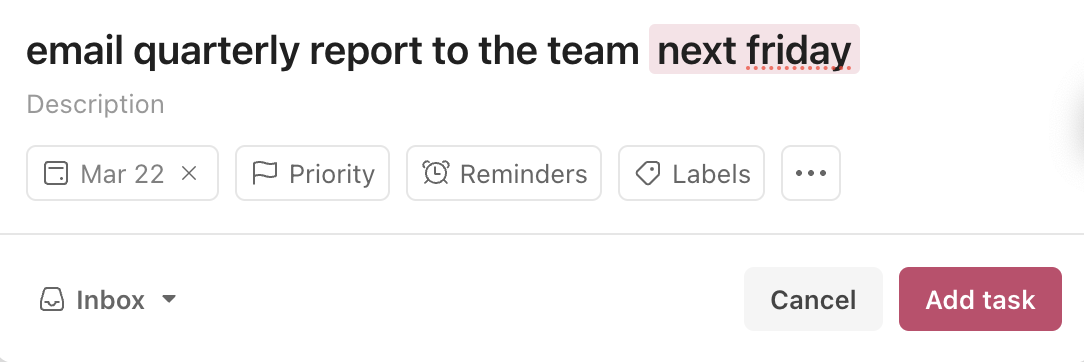
The AI assistant is a Todoist add-on that offers task suggestions, suggests ways to make tasks more actionable, and gives tips on how to complete tasks.

You can also use Todoist's AI to create custom filters using natural language, instead of having to build queries.
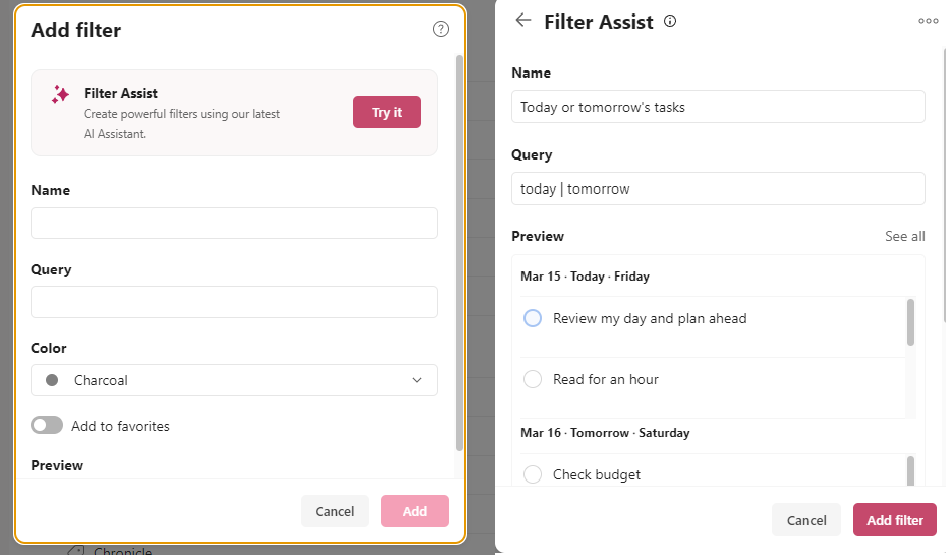
Asana's AI, known as Asana Intelligence, takes a more comprehensive approach to integrating artificial intelligence into project management. Asana Intelligence can assist in all sorts of ways, from generating summaries to creating goals to deriving action items from text.
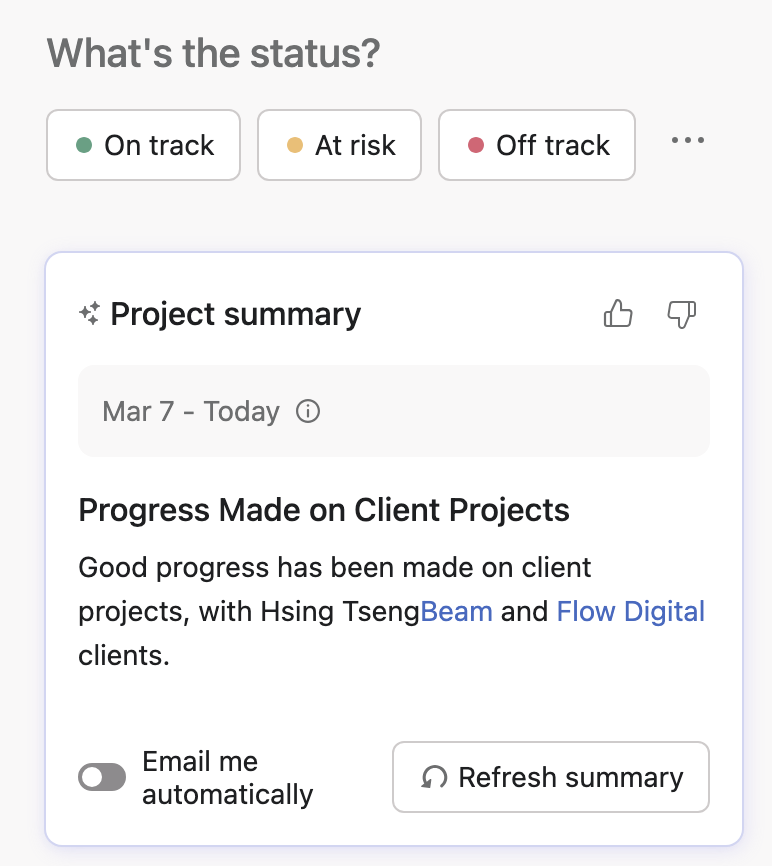
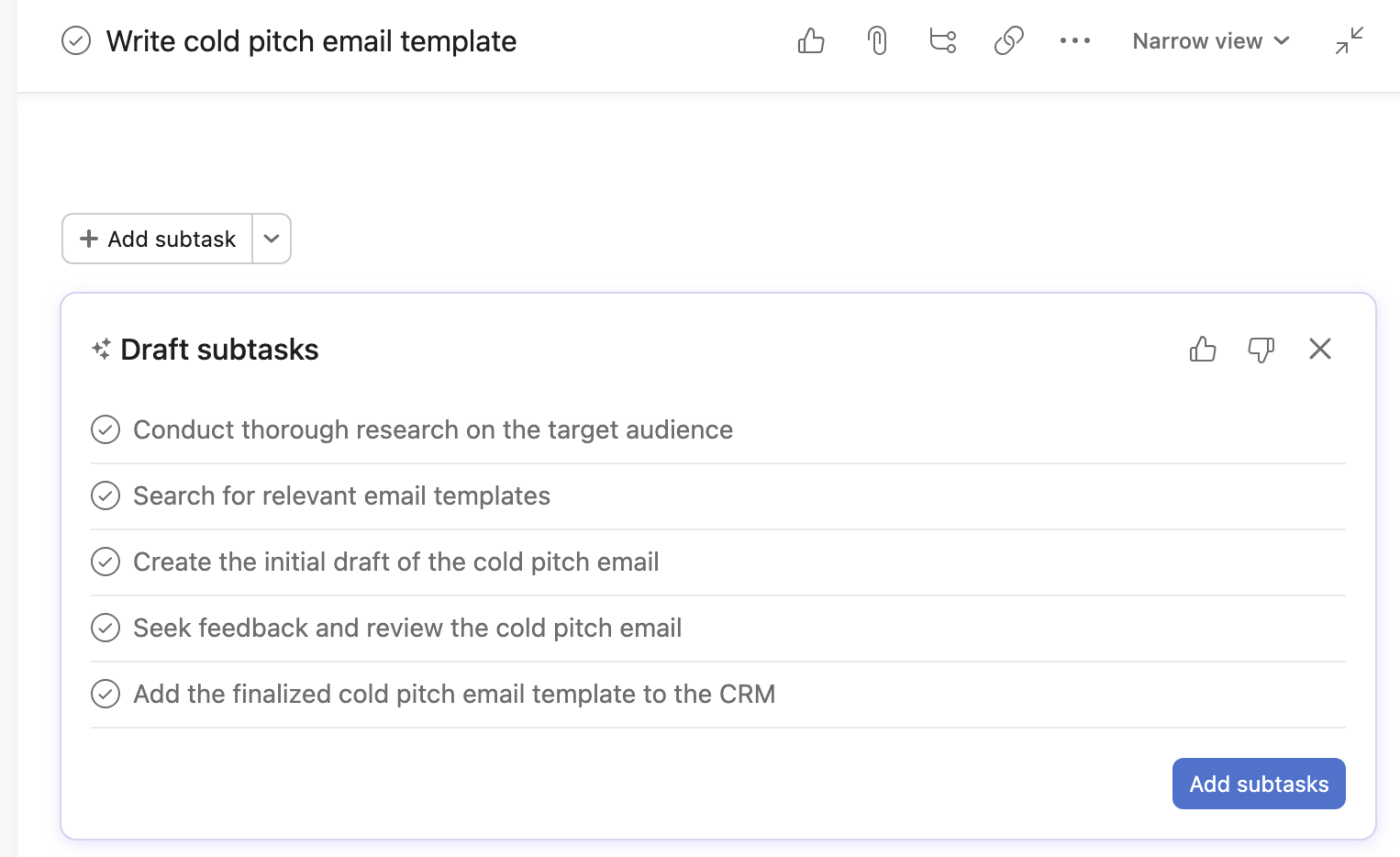
Asana Intelligence offers smart everything—from goals to statuses, fields to forms, and questions to answers, its AI is integrated fully throughout the platform.
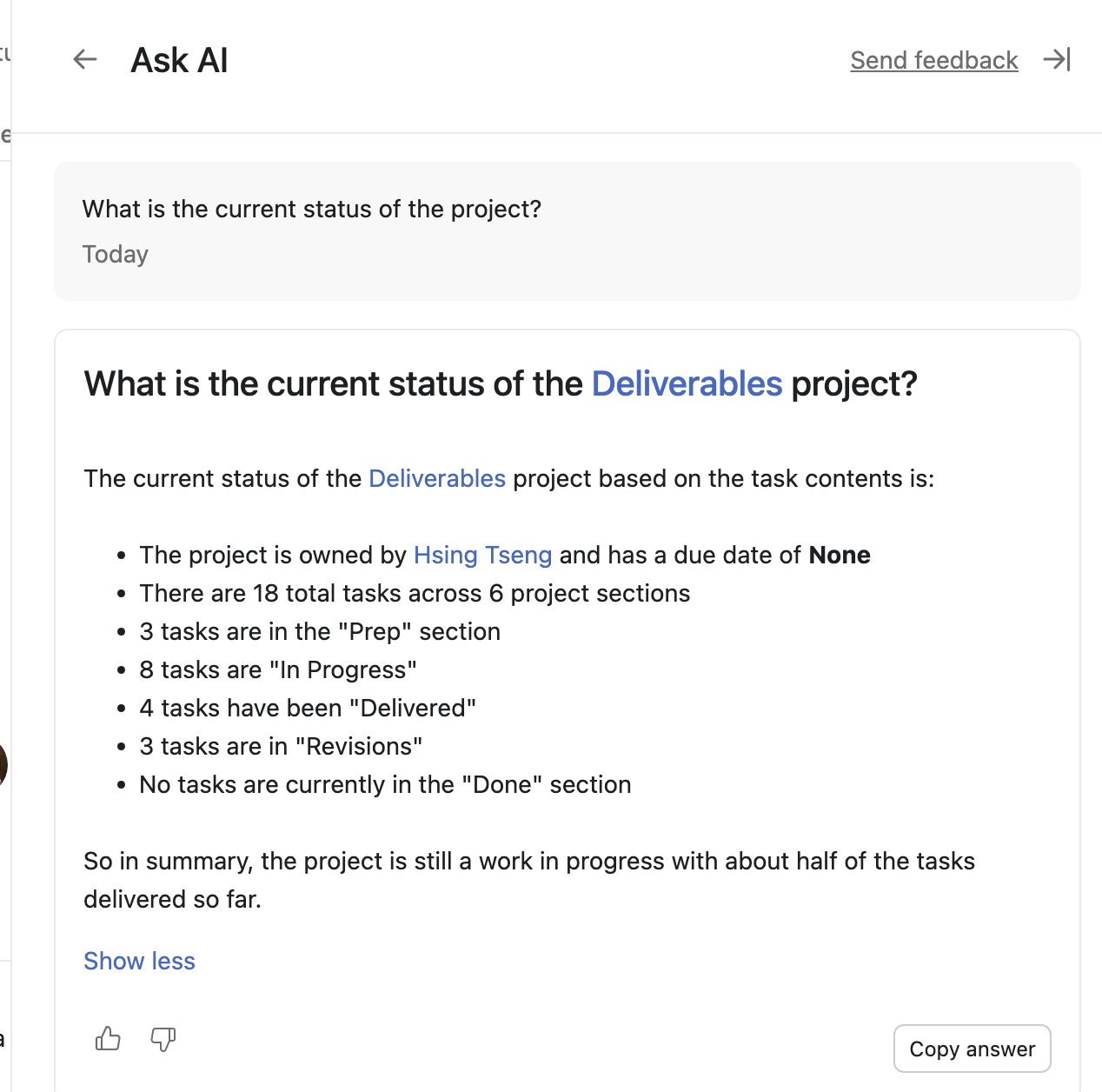
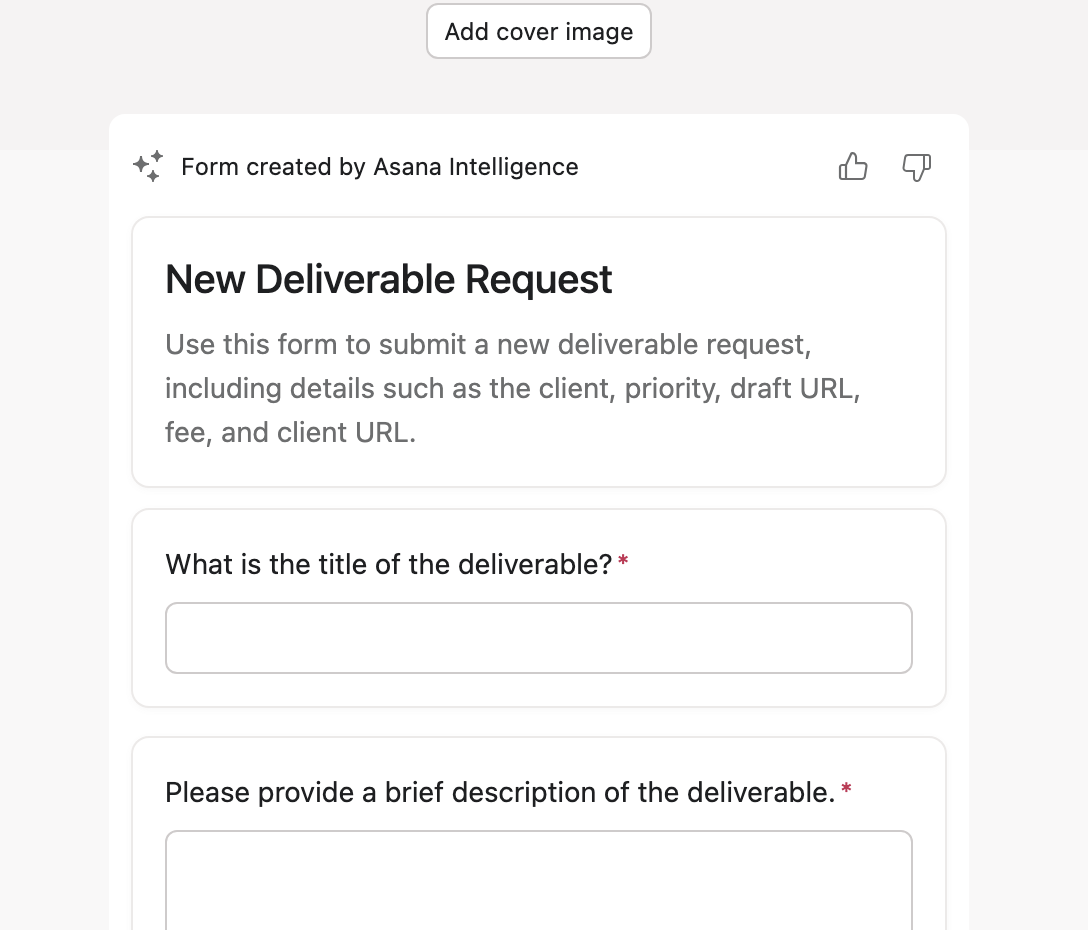
It's a slam dunk win for Asana on the AI field in terms of working smarter, not harder.
Asana has better automations and more native integrations, but both apps integrate with Zapier
Asana's edge in automation comes from its Workflows feature, a powerful built-in automation tool designed to automate repetitive tasks and processes within the platform. This means you can set up triggers and actions within Asana itself, without needing to rely on external tools. For example, you can automatically create subtasks or assign tasks to team members based on project stage.
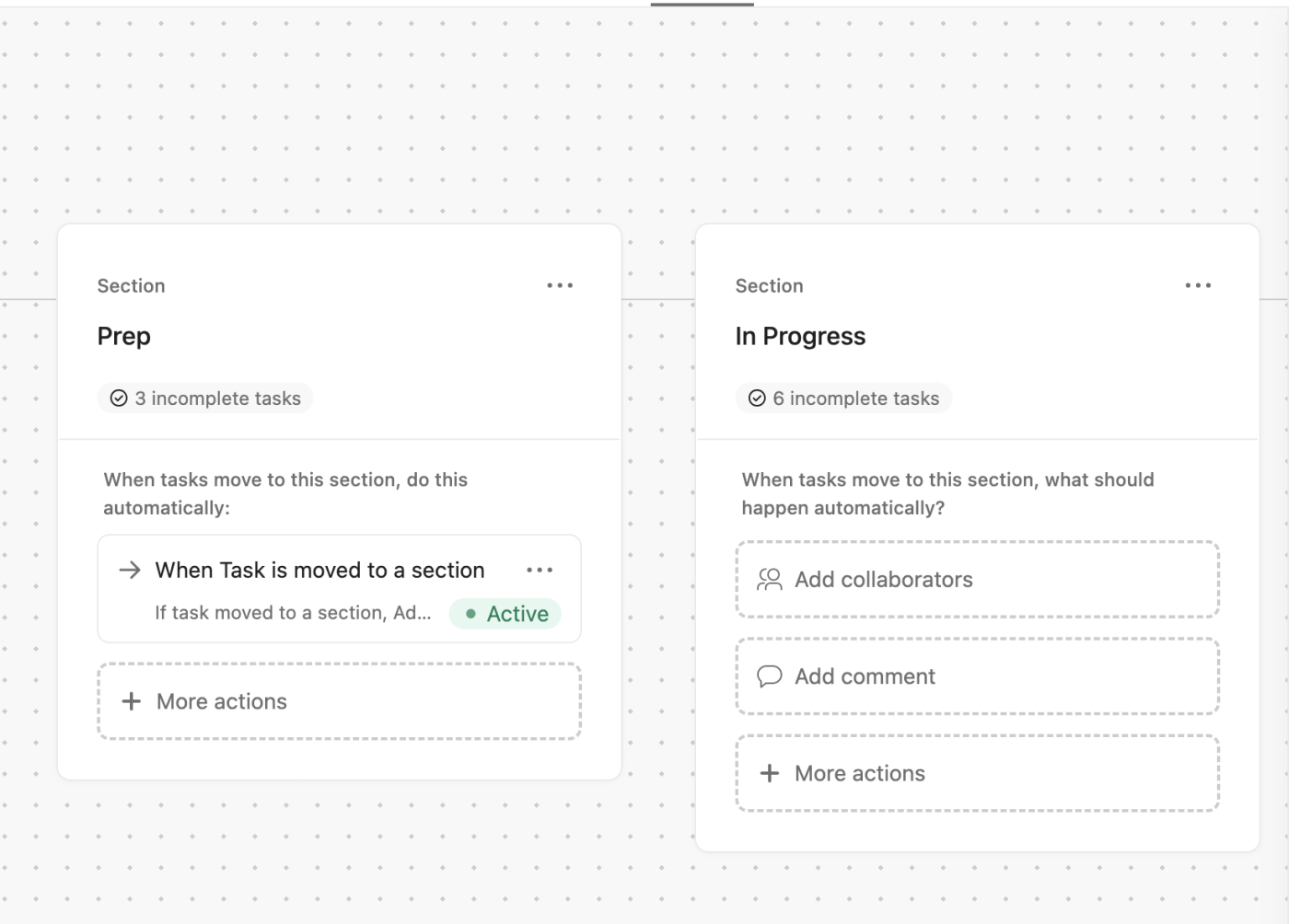
But they both integrate with plenty of third-party tools. And because Todoist and Asana both connect to Zapier, they work with thousands of other apps. That means you can trigger actions in Todoist or Asana when things happen in the other apps you use, or send data to other apps straight from Todoist or Asana.
Learn more about how to automate Todoist and how to automate Asana, or get started with one of these pre-made workflows.
Add new Google Calendar events to Todoist as tasks
Create new Asana tasks from new Google Calendar events
Zapier is a no-code automation tool that lets you connect your apps into automated workflows, so that every person and every business can move forward at growth speed. Learn more about how it works.
Todoist vs. Asana: Which should you choose?
Choose Todoist if:
You operate as a team of one or few, managing simple, straightforward projects
You have a limited budget for a project management tool
You prefer a minimalistic interface
Choose Asana if:
You have a larger team spread across multiple projects and departments
Customization and increased visibility are must-haves
You need to speed things up with built-in automation and AI
If you're looking for a straightforward tool, Todoist is both easier to pick up and cheaper, but limited in its functionality when it comes to collaboration. Asana, meanwhile, is well-suited for nuanced teams with complex projects, collaborating on a larger scale.
Related reading:
